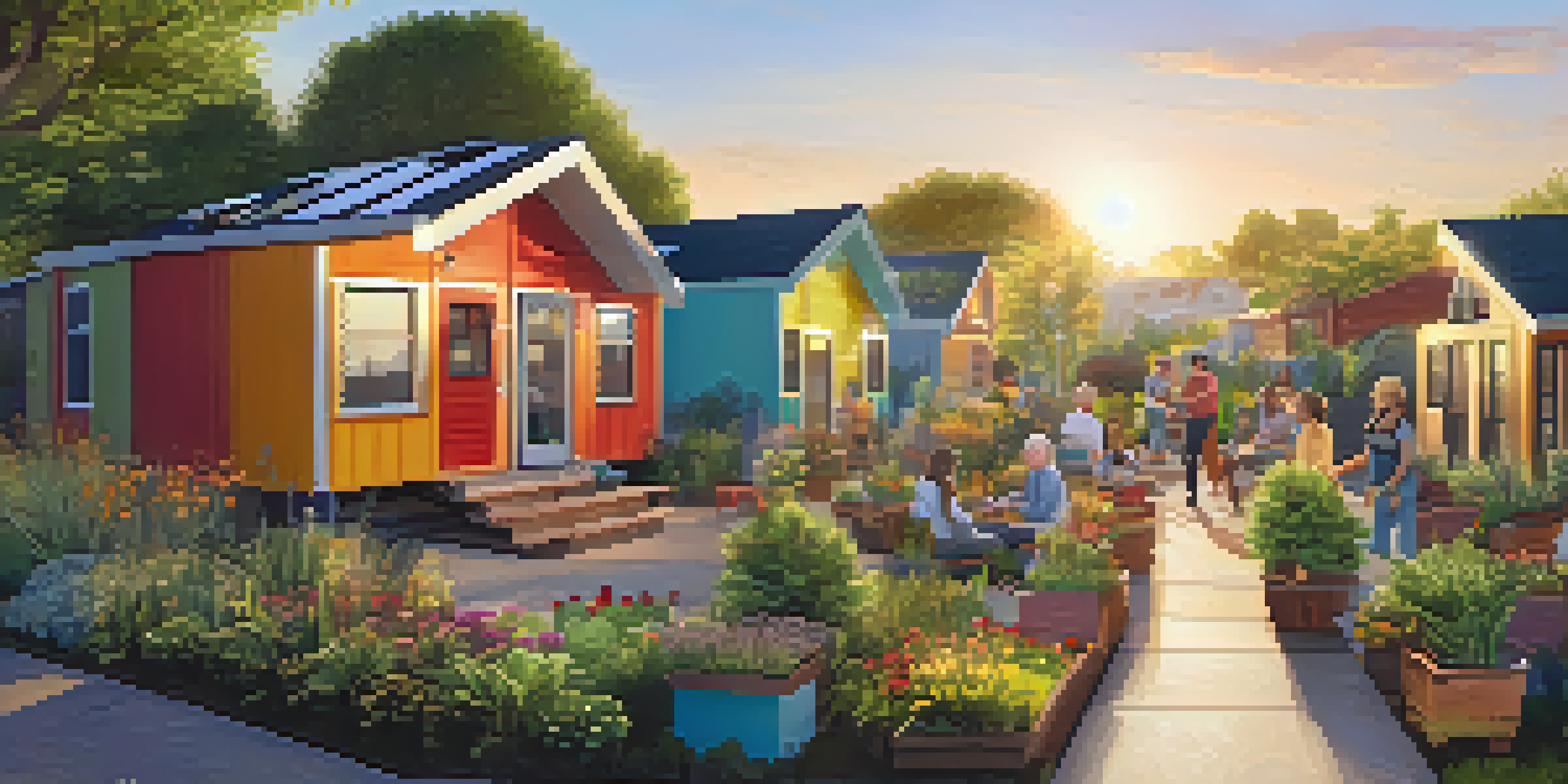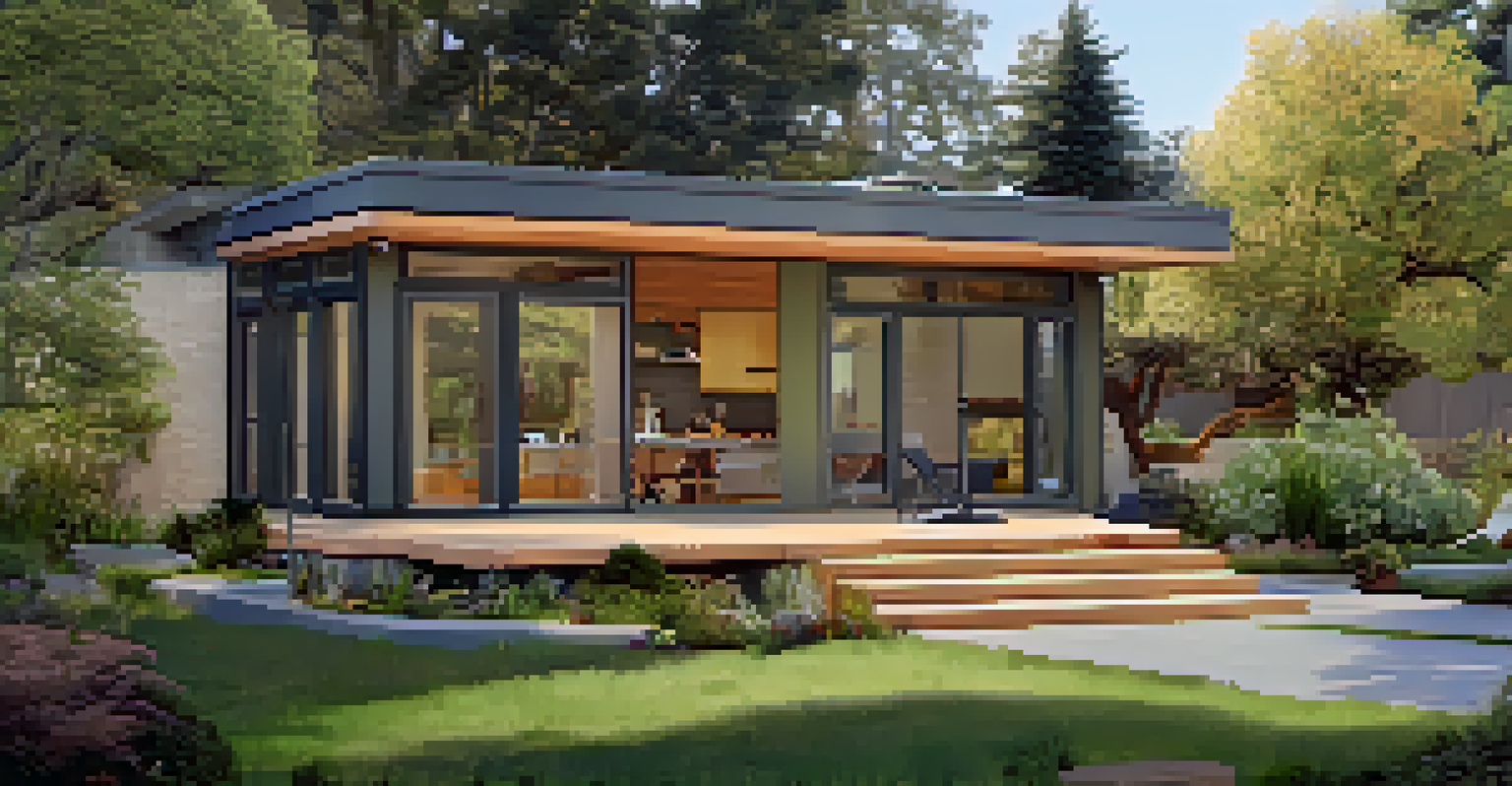Affordable Housing Solutions for Austin's Urban Challenges

Understanding Austin's Housing Crisis and Its Impact
Austin is currently facing a significant housing crisis, with skyrocketing prices making it increasingly difficult for residents to find affordable options. This trend is not just a statistic; it affects families, young professionals, and long-time citizens alike, pushing many to the outskirts of the city. The vibrant culture and job opportunities that attract people to Austin also contribute to the demand for housing, creating a perfect storm of affordability challenges.
Housing is a basic human need and a fundamental right. Everyone deserves a place to call home.
As the population continues to grow, the lack of affordable housing leads to increased displacement and homelessness. Many individuals are forced to make tough choices, often sacrificing their quality of life or living in overcrowded conditions. The city's diversity and inclusivity are at risk as lower-income residents struggle to remain in the community they love.
To tackle these pressing issues, it's essential to explore innovative housing solutions that can provide relief. By addressing the root causes of the crisis, we can work towards creating a more equitable and accessible housing landscape for all Austinites.
Community Land Trusts: A Sustainable Solution
Community Land Trusts (CLTs) offer a unique approach to affordable housing by decoupling land ownership from property ownership. In this model, a nonprofit organization owns the land, while individuals or families can purchase or rent the homes on that land at a significantly reduced cost. This not only makes housing more affordable but also ensures long-term stability for residents.

CLTs help maintain affordability over time by controlling resale prices, preventing market speculation from driving up costs. For example, when a homeowner decides to sell, they must do so at a price that keeps the home affordable for future buyers. This model has been successful in cities like Burlington, Vermont, and can be adapted to suit Austin's unique needs.
Housing Crisis Affects All Austinites
Austin's housing crisis impacts families and individuals, pushing many to seek affordable options outside the city.
By investing in CLTs, Austin can empower communities and promote sustainable development, ensuring that affordable housing remains an option for generations to come. This approach fosters a sense of community ownership and pride, which can strengthen neighborhoods and enhance local social ties.
Tiny Homes: A Creative Housing Alternative
Tiny homes have gained popularity as a practical and affordable housing option, providing a solution for those who might otherwise struggle to find a place to live in Austin. These compact homes can be built quickly and at a lower cost than traditional houses, making them an attractive choice for individuals and families alike. Plus, they offer a minimalist lifestyle that encourages residents to focus on experiences rather than possessions.
The best way to predict the future is to create it.
Many cities have started to embrace tiny home communities, which can foster a sense of belonging among residents while maximizing land use. By clustering these homes together, cities can create vibrant neighborhoods that promote social interaction and community engagement. In Austin, initiatives like the 'Community First! Village' exemplify how tiny homes can provide stable housing for those experiencing homelessness.
As Austin continues to grapple with its housing challenges, tiny homes can serve as a flexible and efficient solution. They not only provide affordable living options but can also be an innovative way to address the city's growing population while preserving its unique character.
Accessory Dwelling Units: Maximizing Existing Space
Accessory Dwelling Units (ADUs), also known as granny flats or backyard cottages, are another promising solution to Austin's housing crisis. These small, secondary housing units can be built on existing residential properties, allowing homeowners to generate rental income while providing affordable housing options for tenants. This dual-purpose approach can significantly ease the burden on the housing market.
ADUs offer a win-win scenario: homeowners benefit from additional income, while renters gain access to more affordable housing in desirable neighborhoods. Cities like Portland have successfully implemented ADU programs, and similar initiatives could be tailored to fit Austin's specific needs. By simplifying zoning regulations and streamlining the permitting process, Austin can encourage more homeowners to consider adding ADUs to their properties.
Community Land Trusts for Affordability
Community Land Trusts decouple land and property ownership, ensuring long-term housing affordability for residents.
As the city expands, ADUs can help preserve the character of neighborhoods while increasing housing density in a manageable way. By embracing this innovative solution, Austin can create more diverse housing options that cater to a wider range of residents.
Co-Housing Models: Building Community and Affordability
Co-housing models are gaining traction as a way to foster community while addressing affordability issues in urban areas. These intentional communities allow residents to share resources, facilities, and even responsibilities, which can significantly reduce living costs. By pooling resources, co-housing residents can create a supportive environment that encourages collaboration and connection.
In co-housing communities, private homes are complemented by shared spaces such as kitchens, gardens, and recreational areas. This arrangement not only provides affordable living options but also cultivates a sense of belonging among residents. Examples from around the country show how successful co-housing communities can be, with many residents reporting increased satisfaction and community engagement.
By promoting co-housing as a viable housing solution, Austin can tap into the power of community-driven living. This model not only addresses affordability but also aligns with the city's values of inclusivity and collaboration, ultimately fostering stronger neighborhoods.
Public-Private Partnerships: A Collaborative Approach
Public-private partnerships (PPPs) are essential for addressing Austin's housing challenges. By collaborating with private developers, the city can leverage resources and expertise to create affordable housing projects that benefit all stakeholders. These partnerships can help streamline the development process, making it easier to bring new projects to fruition while ensuring that affordability remains a priority.
PPPs can take many forms, such as joint ventures, financial incentives, or land donations, all aimed at maximizing the impact of affordable housing initiatives. For instance, the city might provide tax breaks to developers who commit to including a certain percentage of affordable units in their projects. This encourages investment while helping to meet the growing demand for housing.
Innovative Funding for Housing Solutions
Creative financing methods like social impact bonds can provide essential funding for affordable housing projects in Austin.
By fostering a collaborative approach, Austin can create innovative housing solutions that serve the needs of its diverse population. These partnerships can lead to meaningful change, ensuring that affordable housing is not just a dream but a reality for many residents.
Innovative Funding Solutions for Affordable Housing
Finding funding for affordable housing projects can be a significant hurdle, but innovative financing solutions are emerging to help bridge the gap. Creative funding strategies, such as social impact bonds and community investment funds, can provide the necessary capital for developers to build affordable units. These approaches not only attract investors but also promote social equity and community development.
Social impact bonds, for example, allow private investors to fund projects that will ultimately benefit the community. If the project meets its goals, such as reducing homelessness or improving housing stability, the government pays back the investors with interest. This model encourages accountability and results-driven approaches while providing much-needed funding for affordable housing.

By exploring diverse funding options, Austin can expand its arsenal of tools to combat the housing crisis. These innovative solutions can help create a more sustainable and inclusive city, ensuring that affordable housing remains accessible to all residents.